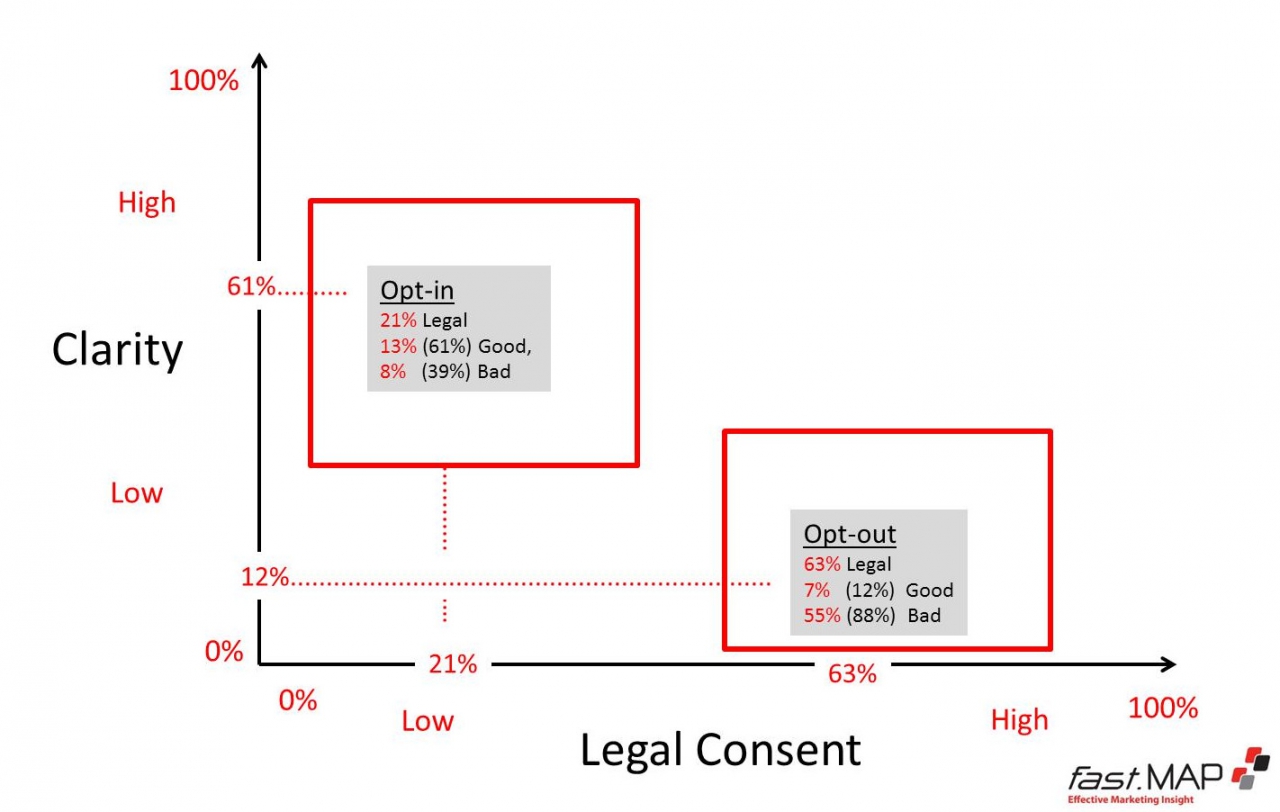Opt-in, Opt-out: Donât mis-step in the âmarketing hokey-cokeyâ
18 May 2017

GDPR did not lead to the mandatory opt-in some feared. Many are going all opt-in, through choice, pressure or compliance. Some persist with a combination of opt-in and opt-out within a statement – something many wags call the ‘marketing hokey-cokey’.
Regardless of whether you are in, out, or indeed shaking it all about, here are some potentially uncomfortable truths that marketers must grapple with when it comes to consent and permissions.
Opt-out generates far greater permission rates than opt-in
Opt-out is the passive option; if respondents fail to tick a box to stop further marketing contact, they remain on the database.
But with opt-in they have to actively find and tick a box to give consent (the mechanism increasingly favoured by regulators and for codes of practice). If they don’t tick, they must be removed from the marketing/ fundraising database.
Impatient consumers tend to skim-read statements to pick out key facts. With opt-out many consumers will consent by default; they assume the act of ticking is a commitment and so avoid doing so. Some will simply misunderstand. At fast.MAP we refer to this as ‘bad’ consent.
This means a percentage of the consents acquired via opt-out are caused by impatience and confusion.
The effects of opt-in
How much will your database shrink by going opt-in? Our table below, based upon research from thousands of permission statements, shows that the average level of consent achieved for an opt-out statement is 63% (see the number marked ‘legal’) but for an opt-in statement this drops to just 21%.

Rather than just accepting the inevitability of this reduction there are two factors that should be considered:
- Quality versus quantity
The research indicates that of the 63% that provided consent through opt-out (so can all legally be used), the vast majority (88%) did not intend to. This is ‘bad’ consent. This is in sharp contrast with opt-in respondents of which over 60% intended to provide consent, which we refer to as ‘good’ consent.
So whilst your database might be smaller there is a likelihood response rates could increase. You might consider reviewing the relative strengths of your communication channels. Some of the more expensive media may become cost-effective again when directed towards more responsive “opt-inners”.
- Minimise the reduction
There is a significant difference between the worst and best performing opt-in statements. Pragmatic marketers are planning how they can ensure the volume of data collected through opt-in is as high as possible by optimising both structure and language by careful testing.
Read about the three key pillars that influence consent – www.fastmap.com/pillars
What makes consent an ‘elevator pitch’ – www.fastmap.com/elevator
How consent can be about quality, not quantity – www.fastmap.com/types
Download the 11 Steps to Your Consent and Permissions whitepaper – normally £50, free for DMA members with download code 11STEPS102 – www.fastmap.com/11steps





Please login to comment.
Comments